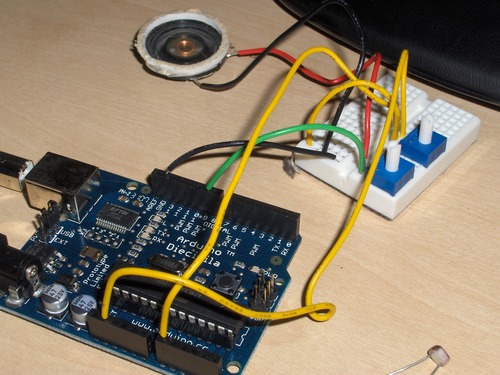 In this time of digital downloads and iPods, some audiophiles may argue that the quality of our source material has suffered some spectral slipping due to digital compression schemes. I would argue that the audio quality of most digital music is more than acceptable, but the playback equipment is an afterthought. If you’ve ever plugged your headphones into the sound card output of your laptop and cranked the volume to “11” just to get a dose of white noise sufficient to cut out the urban Baltimore street noise, then you might be interested in a way to decrease the ever present noise floor of your music. One option would be to purchase an external DAC – something like a USB audio device. While this may offer better results than an integrated sound card or iPod type device, the end result when using a pair of high quality headphones may still be unacceptable.
In this time of digital downloads and iPods, some audiophiles may argue that the quality of our source material has suffered some spectral slipping due to digital compression schemes. I would argue that the audio quality of most digital music is more than acceptable, but the playback equipment is an afterthought. If you’ve ever plugged your headphones into the sound card output of your laptop and cranked the volume to “11” just to get a dose of white noise sufficient to cut out the urban Baltimore street noise, then you might be interested in a way to decrease the ever present noise floor of your music. One option would be to purchase an external DAC – something like a USB audio device. While this may offer better results than an integrated sound card or iPod type device, the end result when using a pair of high quality headphones may still be unacceptable.
You may be thinking – “What makes headphones high quality and why do high quality headphones require special equipment? Shouldn’t I get better sound from my current setup?”
The answer is yes and no. Paying a bit more money for some “in ear monitor” or “canalphone” headphones will get you the best sound from your current headphone output because the drivers in such small headphones require very little voltage to operate. Ohm’s Law tells us that voltage = (current) x (resistance). It is the difference in voltage magnitude that drives the diaphragm in a speaker to produce sound, and if the current drawn from the audio amplifier is constant, then the resistance (impedance) of the speaker defines how loud the music will be. The impedance of a speaker generally increases with size. Assuming that all headphones are 100% efficient, then larger headphones will require more current to operate at the same voltage difference. Of course there are other compounding factors such as diaphragm size and dynamic current draw, but in general larger headphones just need more power.
Now you are thinking to yourself – “Then I should just turn up the volume control and everything is fine, right?”
WRONG. A sound wave is transmitted mechanically as a combination of complex sine waves. To approximate a bunch of sine waves your DAC sums all the digital “samples” over a certain “rate” and assembles something like the original mechanical sine wave in the form of an oscillating voltage. This signal is passed to the headphone amplifier and the magnitude of the voltage is increased – producing enough of a voltage change to cause the diaphragm in your headphone speaker to move back and forth, and you hear sound. If the quality of the amplifier is poor, then as the volume is increased the sine wave becomes more of a square wave. Square waves ≠ sound waves. This square wave characteristic is known as “clipping” – as in clipping off the top of a sine wave – and it results in the type of distortion that causes you to jump for the volume control whenever “that one loud song” comes on.
The obvious answer to most headphone audio problems is to build a better amplifier. Chu Moy designed a simple battery powered amplifier that almost anyone can build and, to prove it, I will build one. My departure point is an article at tangentsoft.net. I ordered the parts from mouser.com. As soon as possible I will start the build and post pictures of my progress.



2 thoughts on “Building a CMoy headphone amplifier”
I’m looking forward to listening to the Chu Moy amp. I picked up a PCB for a Millet Max amp a few years ago, but have yet to assemble it. I guess I’m waiting to have an extra $100 to spend on parts…
I’ve also heard some good things about the BantamDAC, which can be put together for about $30 (PCB). I’d be interested to compare it to my Griffen iMic, which I think does a pretty good job.
Yes, I left room in the project case for just such a DAC. We’ll see how the amp goes first…